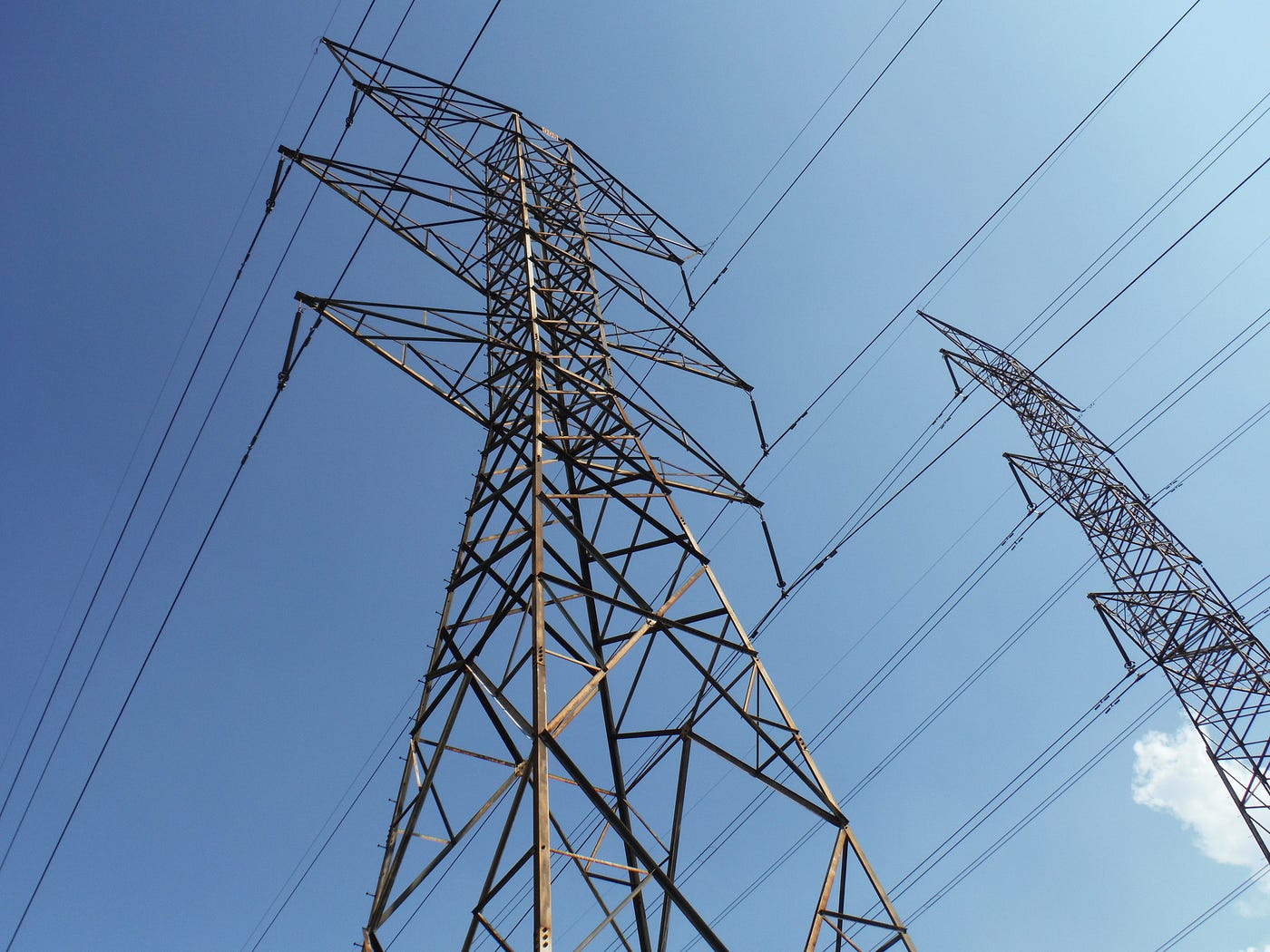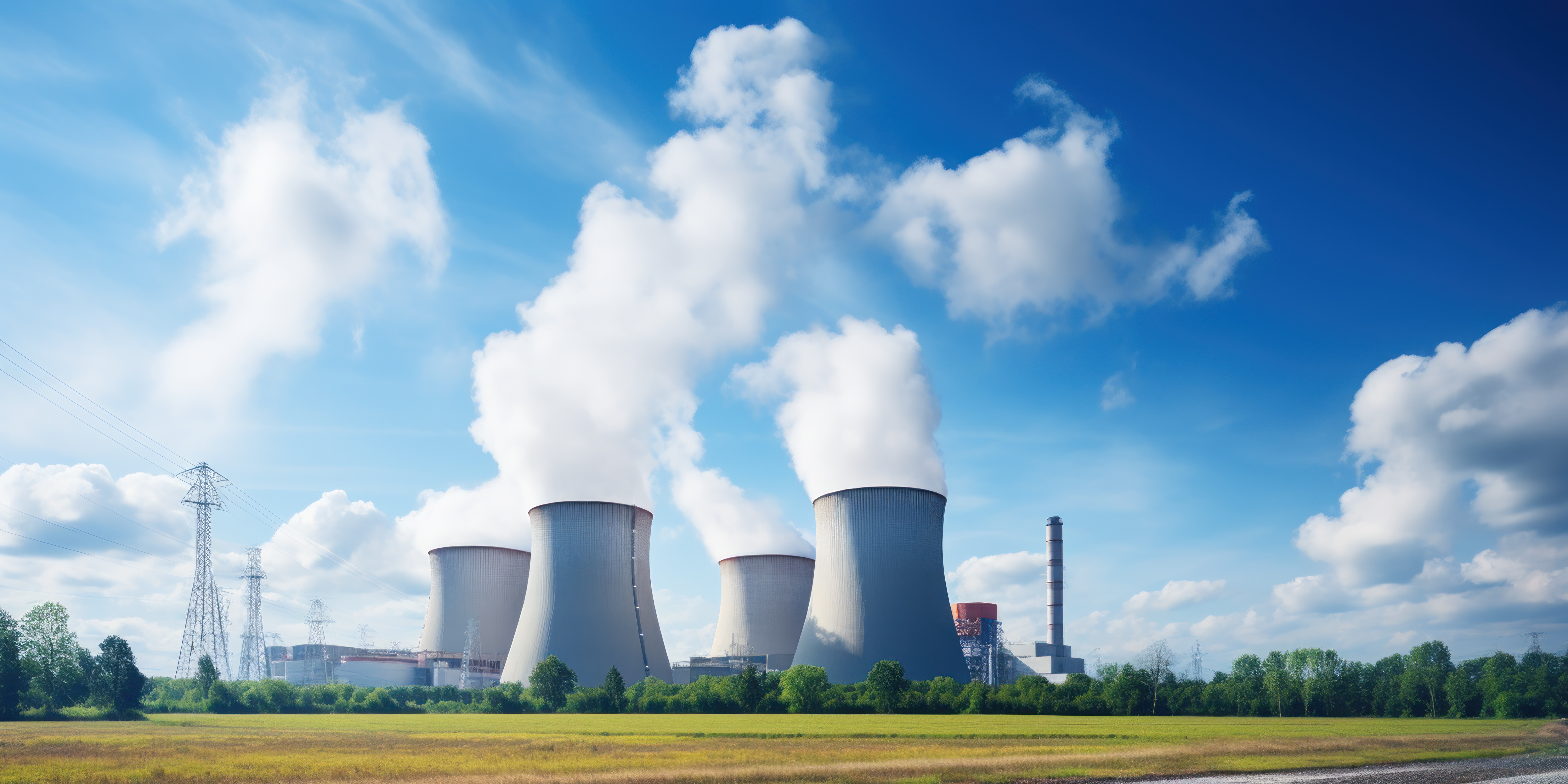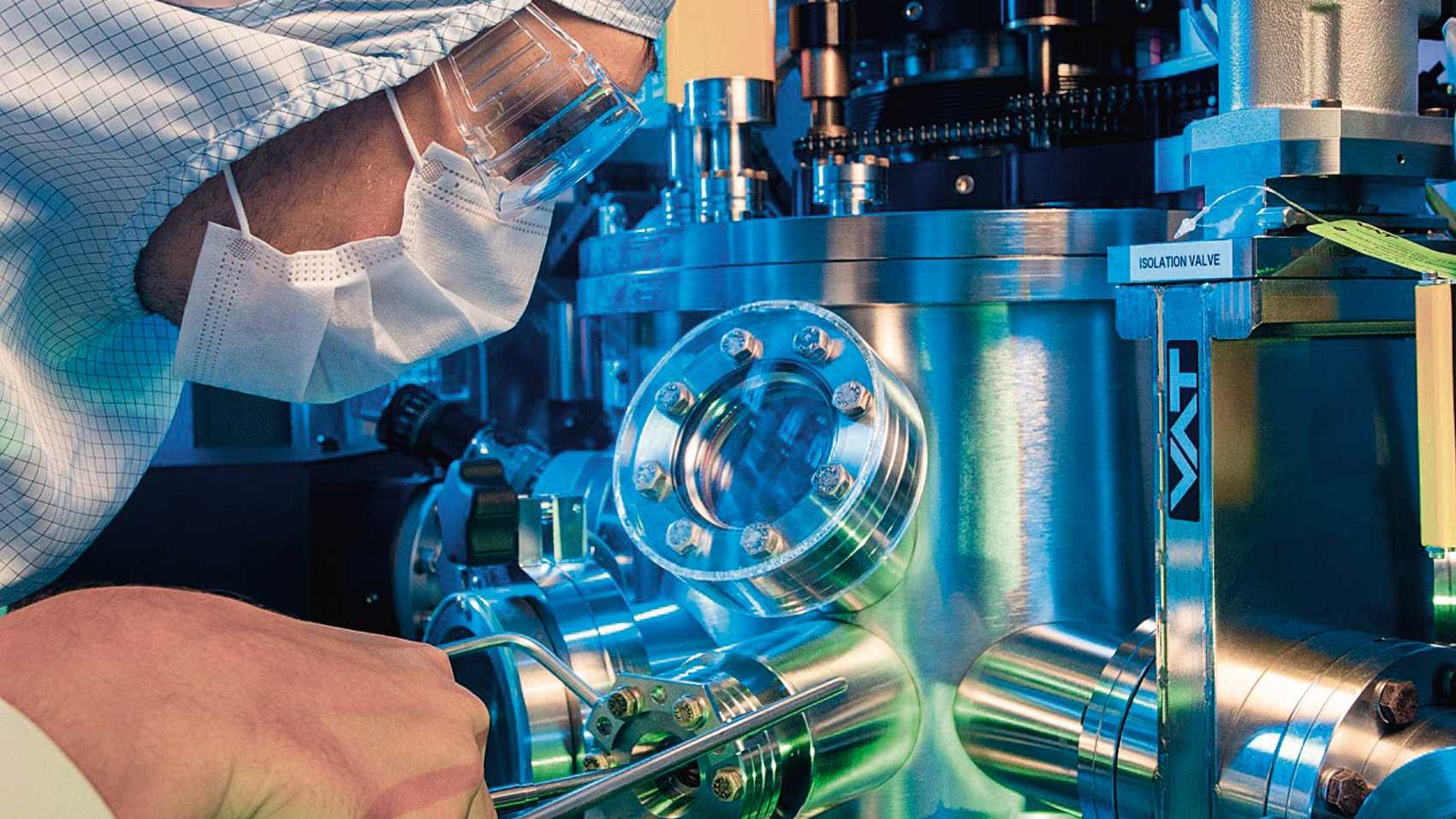The Green Energy Transition
Why Nuclear Power is Essential
Key Generation Uranium News Highlights

Generation Uranium Secures Key Mining Permits

Breakthrough Technology Enhances Uranium Purity

Global Energy Leaders Invest in Uranium
September 4, 2024
The world is at a critical juncture in its pursuit of sustainable and renewable energy sources.
The urgent need to combat climate change and reduce carbon emissions has propelled a global push towards green energy.
Countries around the globe are setting ambitious targets to reduce their carbon footprints, driven by the growing awareness of the environmental and economic impacts of fossil fuels.
Renewable energy sources like wind, solar, and hydro are at the forefront of this transition, promising to provide cleaner alternatives to traditional fossil fuels.
However, despite their potential, these renewable sources face significant challenges in terms of reliability, energy density, and storage.
As the world races to meet its climate goals, it becomes increasingly clear that relying solely on wind and solar may not be sufficient to meet the global energy demand.
This is where nuclear power comes into play.
Nuclear energy, with its high energy density and low carbon emissions, offers a viable solution to bridge the gap between renewable energy sources and the growing energy needs.
Nuclear power plants can produce large amounts of electricity with minimal environmental impact, making them a crucial component of the green energy transition.
In this article, we will explore the essential role of nuclear power in the global shift towards sustainable energy.
We will examine the current energy landscape, the challenges faced by renewable sources, and how nuclear energy can provide the stability and efficiency needed to achieve a greener future.
By understanding the importance of integrating nuclear power into our energy mix, we can pave the way for a more sustainable and reliable energy system.

Current Energy Landscape and Challenges
The global energy landscape is dominated by a mix of fossil fuels and renewable energy sources.
Fossil fuels, such as coal, oil, and natural gas, have long been the primary sources of energy, but they come with significant environmental impacts.
The combustion of fossil fuels is a major contributor to greenhouse gas emissions, leading to climate change, air pollution, and health problems.
In contrast, renewable energy sources like wind, solar, and hydropower generate energy with minimal emissions during operation, but they are not without their own challenges.
Fossil fuels remain the largest sources of energy globally, accounting for about 84% of total energy consumption.
This heavy reliance on fossil fuels is unsustainable due to their finite nature and environmental consequences.
The burning of coal, for instance, releases large amounts of carbon dioxide and other harmful pollutants into the atmosphere, contributing to global warming and health issues such as respiratory diseases (Our World in Data).
Renewable energy sources are gaining traction, with significant investments and technological advancements driving their growth.
Solar and wind energy, in particular, have seen rapid increases in capacity.
However, these sources face limitations, including intermittency and storage challenges.
Solar power generation is dependent on sunlight, which varies by time of day and weather conditions.
Similarly, wind energy is contingent on wind patterns, which are not constant.
These variability issues necessitate robust energy storage solutions to ensure a stable energy supply (NREL).
Hydropower, the largest source of renewable energy, has been a reliable provider of low-carbon electricity for decades.
However, its expansion is limited by geographical constraints and environmental concerns related to ecosystem disruption and water resource management (Energy.gov).
The increasing energy demands driven by technological advancements, particularly in artificial intelligence and digital infrastructure, highlight the need for a reliable and high-capacity energy source.
Nuclear power, fueled by uranium, presents a viable solution to this challenge.
Unlike fossil fuels, nuclear energy produces minimal greenhouse gas emissions during operation and offers a stable energy supply capable of meeting large-scale demands.
Additionally, advancements in nuclear technology, such as Small Modular Reactors (SMRs), promise enhanced safety and efficiency, making nuclear power an essential component of a sustainable energy future.
Nuclear Power: A Proven Solution
Nuclear power stands out as a proven solution in the quest for reliable and sustainable energy.
Its high energy density and ability to generate substantial amounts of electricity with minimal environmental impact make it a crucial component of the green energy transition.
One of the primary benefits of nuclear energy is its ability to produce a large amount of low-carbon electricity.
Nuclear power plants generate about 10% of the world's electricity and approximately 18% in advanced economies, making them the largest source of low-carbon electricity in many regions.
This significant contribution helps reduce reliance on fossil fuels, which are major contributors to greenhouse gas emissions and climate change (IEA).
Nuclear energy's environmental advantages are noteworthy.

Unlike fossil fuels, nuclear power does not emit greenhouse gasses during operation, making it a cleaner alternative.
This attribute is vital for achieving global climate goals and reducing the carbon footprint of energy production.
Additionally, nuclear power plants have a small land footprint compared to renewable sources like solar and wind, which require vast areas to generate equivalent amounts of energy.
The reliability of nuclear power is another key advantage.
Nuclear plants operate at a high capacity factor, meaning they can produce electricity at full power for a larger percentage of the time compared to renewable sources.
This reliability is essential for ensuring a consistent energy supply, especially as the demand for electricity grows with technological advancements such as AI.
Nuclear power's ability to provide stable baseload power complements intermittent renewable sources, ensuring a balanced and resilient energy grid (IAEA).
Moreover, advancements in nuclear technology are enhancing the efficiency and safety of nuclear power.
Innovations such as Small Modular Reactors (SMRs) offer improved safety features, lower costs, and better waste management solutions.
These advancements make nuclear power a more attractive option for meeting future energy needs sustainably.
In conclusion, nuclear power is a proven solution that provides high-capacity, low-carbon electricity.
Its environmental benefits, reliability, and technological advancements position it as a critical component of the green energy transition.
By integrating nuclear power into the global energy mix, we can move towards a more sustainable and resilient energy future.
Environmental Benefits of Nuclear Energy
Nuclear energy plays a critical role in reducing greenhouse gas emissions and combating climate change.
Unlike fossil fuels, nuclear power plants do not emit carbon dioxide during operation, making them a cleaner alternative for large-scale energy production.
This significant reduction in greenhouse gas emissions is essential for achieving global climate goals and reducing the carbon footprint of the energy sector (IEA).
Nuclear power contributes significantly to the global effort to achieve net-zero carbon emissions.
By providing a stable and reliable source of low-carbon electricity, nuclear energy supports the integration of renewable energy sources like wind and solar into the grid.
This complementary relationship ensures a balanced and resilient energy mix, capable of meeting fluctuating energy demands without compromising environmental goals (IAEA).
Several countries have successfully integrated nuclear power into their energy mix, demonstrating its environmental and economic benefits.
For instance, France derives about 70% of its electricity from nuclear energy, significantly reducing its reliance on fossil fuels and lowering its carbon emissions.

Similarly, the United Arab Emirates' Barakah Nuclear Power Plant is set to decarbonize a substantial portion of the nation's electricity grid, showcasing nuclear energy's potential to support national climate objectives (Our World in Data).
The environmental advantages of nuclear energy extend beyond carbon reduction.
Nuclear power plants have a smaller land footprint compared to renewable energy sources like solar and wind, which require vast areas to generate equivalent amounts of energy.
This efficiency in land use makes nuclear power a more viable option in densely populated regions where space is limited (Fusion for Energy).
In summary, nuclear energy offers substantial environmental benefits by significantly reducing greenhouse gas emissions, supporting net-zero carbon goals, and efficiently utilizing land.
These attributes make it an essential component of the global green energy transition, ensuring a sustainable and resilient energy future.
Technological Advancements in Nuclear Energy

Nuclear energy technology has seen significant advancements, particularly with the development of Small Modular Reactors (SMRs) and Generation IV reactors.
These innovations promise to enhance the efficiency, safety, and sustainability of nuclear power.
SMRs represent a transformative shift in nuclear reactor design.
These reactors are smaller in size compared to traditional nuclear power plants, allowing for greater flexibility in deployment and reduced construction times.
SMRs can be built off-site and transported to their location, making them an attractive option for areas with limited infrastructure.
They also offer distinct safeguards, security, and nonproliferation advantages, ensuring a safer nuclear power generation process (MIT Technology Review).
Generation IV reactors are designed to address the limitations of previous reactor generations.
These advanced reactors use novel concepts, materials, and fuel cycles to enhance safety, sustainability, and economic competitiveness.
For instance, some Generation IV reactors use high-temperature gas, liquid metals, or molten salts as coolants, which can operate at higher temperatures and increase efficiency.
Additionally, these reactors are capable of utilizing existing nuclear waste as fuel, significantly reducing the problem of nuclear waste management (Department of Energy).
Safety improvements are a critical focus of modern nuclear reactor designs.
Innovations like the use of TRISO (tri-structural isotropic) fuel enhance the safety profile of these reactors.
TRISO fuel is highly resistant to corrosion and melting, ensuring that fission products remain contained even under extreme conditions.
This makes modern reactors inherently safer and more reliable compared to earlier designs (World Economic Forum).
Innovative waste management solutions are another area where advanced nuclear technologies excel.
Generation IV reactors, for example, are designed to burn existing nuclear waste, reducing the volume and toxicity of waste that needs to be managed.
This capability not only addresses a significant environmental challenge but also improves the sustainability of nuclear power.
In summary, the advancements in nuclear technology, particularly through SMRs and Generation IV reactors, offer promising solutions to enhance the safety, efficiency, and sustainability of nuclear energy.
These technologies are poised to play a crucial role in the global transition to a cleaner and more reliable energy future.

Current Energy Landscape and Challenges
The global energy landscape is dominated by a mix of fossil fuels and renewable energy sources.
Fossil fuels, such as coal, oil, and natural gas, have long been the primary sources of energy, but they come with significant environmental impacts.
The combustion of fossil fuels is a major contributor to greenhouse gas emissions, leading to climate change, air pollution, and health problems.
In contrast, renewable energy sources like wind, solar, and hydropower generate energy with minimal emissions during operation, but they are not without their own challenges.
Fossil fuels remain the largest sources of energy globally, accounting for about 84% of total energy consumption.
Nuclear power plants have a long lifespan, often operating for 60 years or more, which allows for stable and predictable energy costs over time
(World Nuclear Association).
This stability in energy pricing is crucial for both consumers and industries, providing a reliable energy supply that supports economic development.
Social acceptance of nuclear energy is influenced by public perception and awareness of its benefits.
Public education and transparent communication about the safety, environmental, and economic advantages of nuclear power are essential to gaining and maintaining public support.
Community engagement and involvement in the decision-making process can also enhance social acceptance and trust in nuclear energy projects.
The role of nuclear energy in job creation and economic growth is significant.
Clean energy job creation is a key driver of economic development, and nuclear power plays a vital role in this transition (Department of Energy).
By providing high-quality jobs and supporting local economies, nuclear energy contributes to a just and sustainable energy transition.
Nuclear Power: A Proven Solution
Government policies and international agreements play a crucial role in supporting nuclear energy.
Effective policies can provide the necessary framework and incentives for the development and deployment of nuclear power plants.
These policies include financial incentives, research and development support, and streamlined regulatory processes to facilitate new projects (NEI).
International agreements, such as those established by the International Atomic Energy Agency (IAEA), set safety and nonproliferation standards that member countries must follow.
These agreements ensure that nuclear technology is used safely and responsibly across the globe.

Regulatory challenges are significant in the nuclear energy sector, particularly regarding safety and environmental concerns.
Regulations are stringent to ensure the highest levels of safety and environmental protection.
However, these regulations can also pose challenges in terms of project delays and increased costs.
Strategies to address these challenges include adopting advanced reactor designs that incorporate passive safety features and improving regulatory frameworks to be more adaptive and responsive to technological advancements.
Successful nuclear policies from around the world provide valuable examples.
For instance, France's energy policy includes a substantial reliance on nuclear power, which accounts for approximately 70% of its electricity production.
This policy has enabled France to achieve one of the lowest carbon footprints per capita in the industrialized world.
In the United States, states like Georgia and South Carolina have implemented policies that support the construction of new nuclear plants through financial incentives and streamlined regulatory processes (Department of Energy).
These examples demonstrate how supportive policies and effective regulation can enable the growth of nuclear energy as a key component of a sustainable energy future.
Conclusion: Embracing Nuclear Power for a Sustainable Future
Nuclear power offers substantial economic, environmental, and technological benefits.
Its high energy density and low operational emissions make it a key player in reducing global carbon footprints.
Advancements in nuclear technology, including Small Modular Reactors and Generation IV reactors, enhance safety and efficiency.
Nuclear energy provides a reliable and stable energy supply, essential for supporting both current and future energy demands.
The economic impact of nuclear power is significant, with job creation and long-term cost benefits.
Government policies and international cooperation are crucial in supporting the growth and development of nuclear energy.
Public perception and acceptance are vital, requiring transparent communication about the benefits and safety of nuclear power.
The future of energy relies on a balanced mix of renewable sources and nuclear power to achieve sustainability.
Investing in nuclear energy is not just an option but a necessity for a sustainable energy future.
We call on policymakers, industry leaders, and investors to recognize and support the pivotal role of nuclear power.
By embracing nuclear energy, we can ensure a stable, efficient, and low-carbon energy future for generations to come.
Join us in generating the power of tomorrow.
Subscribe for the Latest Generation Uranium Investor Updates
Subscribe for the Latest on
Generation Uranium's Advancements
Office: 6th Floor,
905 W Pender St,
Vancouver, BC
V6C 1L6
Email: [email protected]

